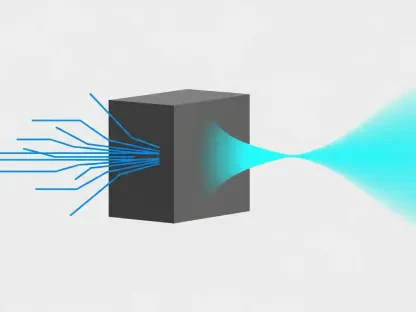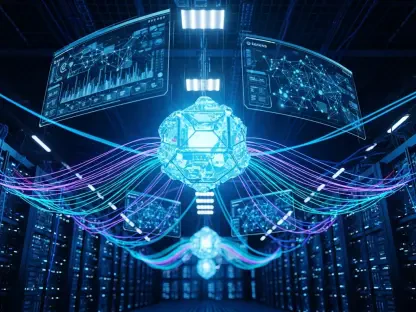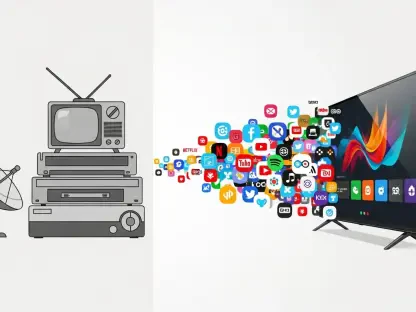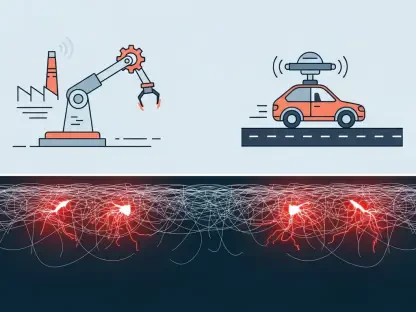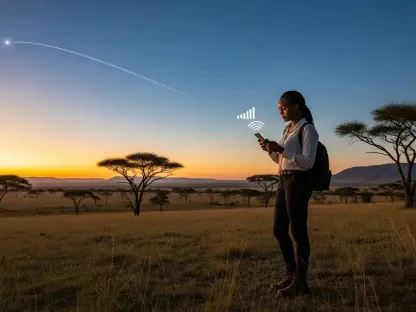Vladislav Zaimov, a seasoned expert in telecommunications and risk management, shares his insights on the intricate restructuring plans of OpenAI. Through this conversation, we explore the balance between profit and purpose within a framework designed to protect ethical considerations while ensuring the growth and dissemination of AI technologies for public welfare.
Can you explain the reasoning behind OpenAI’s decision to create a for-profit arm while remaining under non-profit control?
OpenAI is embarking on a unique journey by establishing a for-profit arm under the guidance of a non-profit parent. This decision stems from the necessity to raise substantial funds to further AI research and innovation, which can be incredibly resource-intensive. By maintaining non-profit oversight, OpenAI ensures that its ethical compass remains aligned with public benefit, providing reassurance that financial pursuits won’t overshadow its mission to serve humanity with AI technologies.
What conversations with the Attorneys General influenced OpenAI’s decision to use a Public Benefit Corporation model?
The talks with Attorneys General in California and Delaware were pivotal. These discussions highlighted the importance of adhering to legal stipulations and maintaining ethical considerations in corporate structure changes. The Public Benefit Corporation model emerged as a fitting approach, marrying the need to satisfy shareholder interests with the pursuit of a public mission. This structure reassures stakeholders that OpenAI’s commitment to ethical practices remains steadfast.
How will the PBC model ensure that both shareholder interests and ethical considerations are balanced?
The PBC model inherently obligates companies to prioritize public benefits alongside shareholder interests. For OpenAI, this means an established framework where ethical considerations are systematically integrated into decision-making processes. The model provides checks and balances that help prevent the compromises that often occur in traditional profit-driven entities, ensuring that decisions made are still centered around public welfare.
What advantages do you anticipate from transitioning to this new corporate structure in terms of fundraising?
Adopting the PBC structure significantly enhances OpenAI’s fundraising capabilities. It opens up pathways to attract investors interested in supporting high-impact initiatives with assured ethical oversight. By appealing to socially-driven investors and showcasing its public mission, OpenAI can tap into resources critical for future developments without compromising its foundational values.
Could you elaborate on how maintaining significant ownership and oversight by the non-profit parent aids OpenAI’s initiatives in sectors like healthcare, education, and science?
The persistent oversight by a non-profit parent ensures that OpenAI’s initiatives in healthcare, education, and science are not solely driven by profit motives. It allows the organization to focus on sustainable and impactful solutions, leveraging AI in ways that push forward societal advances, maintain integrity, and address challenges within these crucial sectors without deviating from its primary mission.
OpenAI’s CEO mentioned the need for hundreds of billions, possibly trillions, of dollars. What specific plans or projects require such massive funding?
Such expansive funding will primarily support OpenAI’s ambition to democratize AI tools globally and ensure their comprehensive accessibility. Projects in this scope involve developing AI technologies to tackle complex, large-scale issues, including climate change, healthcare accessibility, and education, ultimately necessitating investments that reach trillions to execute effectively and provide unparalleled innovations.
How do you see this restructuring helping OpenAI achieve its mission of democratizing AI tools and serving the public good?
This restructuring underpins OpenAI’s mission by allowing it to operate with greater financial flexibility while safeguarding its ethical obligations. It ensures that while aggressive growth and technology dissemination are prioritized, the core mission of democratizing AI remains intact, providing equal opportunities and access to these technological advancements to a global audience.
How will the new structure affect OpenAI’s daily operations and decision-making processes compared to the previous model?
The transition to this new structure will introduce additional layers within decision-making processes, geared towards balancing commercial goals with ethical commitments. Daily operations will require consistent evaluation of potential impacts on public welfare and shareholder benefits, ensuring that all decisions align with the dual mandates set forth by the PBC model.
In what ways do you foresee OpenAI’s resources being broadly available to humanity under this new framework?
With the shift to a PBC model, OpenAI is well-positioned to leverage its resources more equitably and effectively. The structure permits the reinvestment into technologies and initiatives that prioritize access and utility for all, ensuring that the advantages offered by AI can be experienced across diverse, global communities.
What safeguards will be in place to ensure the public mission is prioritized even as you pursue extensive fundraising efforts?
The PBC model innately provides mechanisms to safeguard the public mission. OpenAI will implement specific governance practices, including periodic assessments and transparency protocols, to affirm that its fundraising efforts do not detract from public commitments. This ensures continuous alignment with ethical standards, guaranteeing the organization’s actions remain rooted in societal benefit.
How is OpenAI planning to communicate these changes to its stakeholders and the public?
OpenAI is likely to engage in comprehensive communication strategies encompassing transparency reports, stakeholder meetings, and public forums. These efforts will educate stakeholders and the public on structural evolutions, reinforcing the organization’s unwavering dedication to public mission within this new framework, while illustrating how such transitions serve broader goals.
Could you share more about OpenAI’s long-term vision and how this restructuring contributes to fulfilling that vision?
OpenAI envisions a future where AI drives substantial positive change, equitably dispersed amongst humanity. This restructuring is a foundational step toward fulfilling that vision, facilitating access and innovation unfettered by traditional profit constraints. It solidifies the premise that technology advancements should not be isolated within profitability but instead benefit the broader society.
Are there any potential challenges or risks that OpenAI anticipates with this transition in its corporate structure?
One challenge lies in preserving the integrity of the public mission amidst the drive for financial growth. There’s also the risk of managing evolving stakeholder dynamics as new investors enter OpenAI’s network. These transitions necessitate vigilant governance and adaptability to ensure ethical standards are not diluted under commercial pressures.
How will this shift impact partnerships or collaborations OpenAI currently has or plans to develop in the future?
The shift to a PBC model may enhance OpenAI’s appeal as a collaborative partner, fostering synergistic relationships with like-minded entities. This restructuring potentially expands OpenAI’s network, enabling collaborations focused on mutual ethical objectives and unlocking innovations that emerge from collective pursuits rather than isolated endeavors.
Do you have any advice for our readers?
Stay informed and critical of organizational changes that propose balancing profit with purpose. Understand deeply how such frameworks work and what they mean for technological access and ethical considerations. Your engagement and demand for transparency can help guide organizations toward robust, mission-centric implementations enhancing public welfare.


